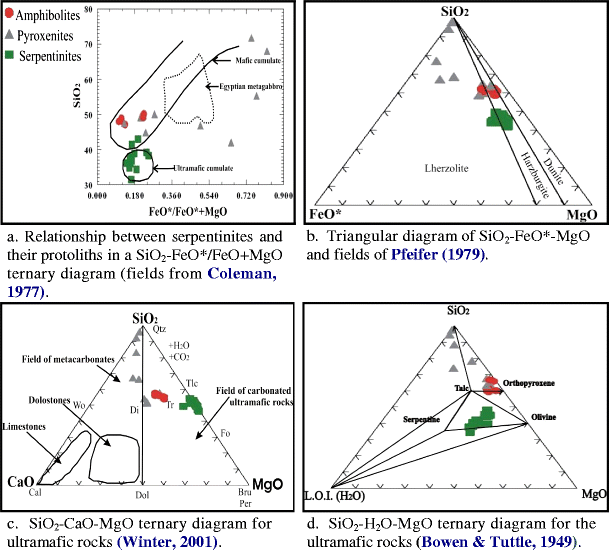

In addition, Li, Ti and P contents in olivine are good tracers of melt/fluid metasomatism, whereas Ni/Co, Ni/Mn and Mn/Zn ratios are indicators of chromite mineralization. As a consequence, the four occurrences of mafic-ultramafic rocks can be distinguished by olivine with (Sc × 10)-(Ti × 2)-Zn and V/Sc-(Co/Ni × 2)-(Zn/Mn × 5) ternary diagrams. Residual olivine grains in mantle xenoliths and ophiolitic peridotites, which represent residues of mantle melting, have higher Ni/Co (>20) and Ni/Mn (>2) ratios than magmatic olivine (Ni/Co 2 ppm, V/Sc > 0.5) from ophiolitic peridotites (V < 2 ppm, V/Sc < 0.5), indicating a more reduced state of continental lithospheric mantle compared to the oceanic lithospheric mantle. Here we present newly-obtained trace element data 7Li, 27Al, 29Si, 31P, 43Ca, 45Sc, 49Ti, 51V, 53Cr, 55Mn, 59Co, 60Ni, and 66Zn of olivine in typical mantle xenoliths, mantle peridotites in ophiolites, and plutonic rocks from layered and Alaskan-type intrusions to develop trace element proxies for the petrogenesis, mineralization and discrimination of various mafic-ultramafic rocks. However, its development of trace elements is limited. The QAPF diagram is not used for all plutonic rocks ultramafic plutonic rocks are the most important group that have separate classification diagrams.Olivine is a ubiquitous mineral in mafic-ultramafic rocks and has been widely used as a mineral marker in various geological processes. This diagram makes no distinction between rock types of the same chemical composition in QAPF, but different chemical compositions with respect to other minerals (such as gabbro, diorite, and anorthosite).

For example: a plutonic rock that contains no alkali feldspar and no feldspathoids, but contains many pyroxenes (unlabeled in QAPF diagram), plagioclase-feldspar, and few quartz grains is probably gabbro (located at the right edge of the diagram, near P). To use this classification method, the concentration (the mode) of these minerals must be determined and normalized to 100%. The QAPF diagram is composed of two ternary plots (QAP and FAP) joined along one side. Other minerals may occur in samples, but they are not utilized by this classification method. F and Q cannot form in plutonic rocks simultaneously due to the difference in their respective silica contents. These minerals are quartz (Q), Alkali feldspars (A), plagioclase feldspars (P), and feldspathoids (F). The QAPF diagram utilizes four minerals, or mineral groups, to classify igneous rocks.


 0 kommentar(er)
0 kommentar(er)
